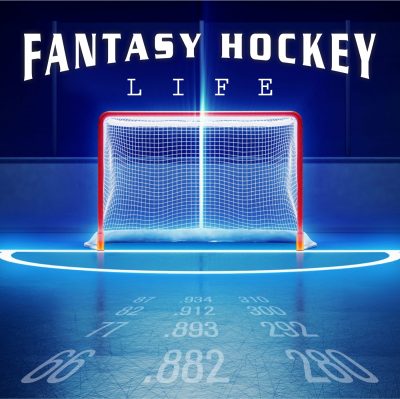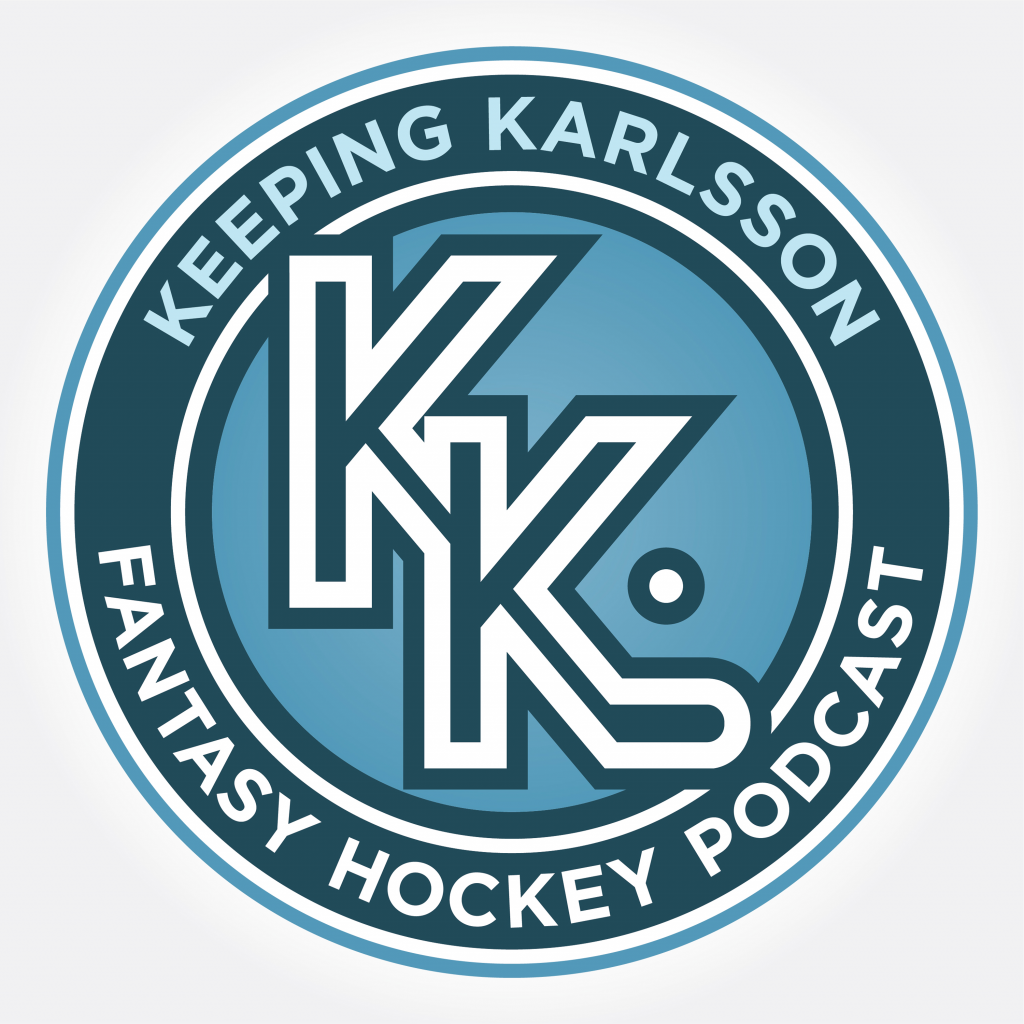Today we are kicking off a mini-series focused on helping us make smarter player decisions at the draft table. It is not enough to know how a player performed in the previous season, but we need to try to determine whether that level of performance was reasonable or unsustainable. We will go division by division and highlight some players who might be poised to bounce back, and some players who it might be better to avoid. To start us off, we will be reviewing players from the Pacific Division.
In order to make this process a bit more concrete we are going to focus on three stats from the Dobber Reports; 5-on-5 team shooting percentage (5on5 SH%), individual points percentage (IPP), and individual shooting percentage (SH%). These are certainly not the end all be all of player evaluation but do tend to flag players who are likely to see a different point pace in the future.
Before jumping into the players, let's do a quick refresher on what these stats tell us. We use team shooting percentage to get an idea of the efficiency goals are being scored while a player is on the ice and we use 5-on-5 because that is the largest game state for players. Power-play points count just the same on the score sheet so we could look at that as well, but in the interest of cutting down our data points we are going to focus on even the strength number here. IPP, which we will sometimes refer to as a player's points participation number, is how often a player is getting a point on a goal that is scored while they are on the ice. Finally, shooting percentage is just the standard: what percent of a player's shots are going into the net?
With all of these stats it is important to take them into context. Not just what would an average player do, but how does this number compare to their career numbers? In order to do that I grabbed the same data points for the 2024-25 season and am comparing them to each player's recent career average. Broadly speaking, and barring changes in the player's situation (changing teams, sudden promotion to a top line etc.) we would expect these numbers to approach that career average.
For our first group we are looking at players whose underlying numbers in question were lower than their recent career averages. Generally speaking, we might expect these numbers to revert back to those averages and therefore those players to have a bit more production in the future.

William Karlsson had a bit of a down year in 24-25. He only played 53 games so that is part of it, but he put up the second lowest point pace of his Vegas career. He has typically been in the 55- to 60-point pace range (with a couple of 70-point outbursts), and with his typical luck he likely would have been in that typical range again. Looking forward to 25-26 and I wouldn't count this 45-point pace season too much against him.
It was really not a good season for Joel Farabee. Coming off of a 50-point pace in 23-24, and into his age-24 season things were looking up. Unfortunately, he lost a lot of time on ice and cratered to a 25-point pace over 81 games. Things got even worse after a trade to Calgary where he put up six points in 31 games (about a 16-point full season pace). The good news is that the underlying numbers here indicate that his totals were quite a bit worse than he deserved. The bad news is that even after accounting for that, with his reduced ice time, he probably only deserved something in the 40-point range. He spent most of his time in Calgary on a line with Mikael Backlund and Blake Coleman, which probably isn't ideal for producing points though he did get some time with Morgan Frost and Yegor Sharangovich (unfortunately also on this list), and with Nazem Kadri and Jonathan Huberdeau. Either of those second two pairings would be better and that is what I would look for before considering drafting Farabee in any but deep leagues.
As just referenced, Sharangovich is on this list, indicating he did a bit worse than we might have expected. His 36-point pace was certainly a disappointment following his 59-point pace in 23-24. All things being fair, Sharangovich probably deserves something closer to a 50-point pace. The problem for Sharangovich was that he lost overall time and power-play time as the year went on. Over the first quarter he was up at almost 19 minutes a night with two and a half minutes on the power play. By the fourth quarter he was down at 1:45 of power-play time and less than 15:30 in overall ice time. Like Farabee, he did deserve better, but even so was only borderline relevant so I will be watching for deployment prior to drafting.
Zach Hyman put up a 49-point pace over 73 games in 24-25. It was a far cry from his 54-goal, 77-point 23-24 season. On the one hand, he deserved better, but the 18.6% he shot in that 79-point season also wasn't sustainable. So when we look at the 24-25 season, add some expected regression, plus the fact that he shot less per game, and lost a little bit of ice time, and we arrive at a potential 60-point season, just like in 21-22. His season as a whole looked very similar to that 21-22 season: His scoring pace, shot rates, and shooting percentage all match that 21-22 season. He does get more power-play time now, so his upside is certainly still higher, but that season gives us a pretty good floor that we should still expect going forward.
Conor Garland is a really interesting study here. For many of the other players, we can see how a bit of their own shooting luck may have contributed to their overall lackluster performances. Garland's was essentially fine. In fact, it was the second highest of his career (though definitely still very much within his average range). He also had a 50-point pace, which is on the low end of his career stats, but still a bit higher than the last two seasons in Vancouver. What is interesting here though is just how much he was impacted by those on the ice with him. He saw a huge increase (4+ minutes) in overall ice time, and a full minute on the power play, getting top unit deployment for the first time. Given that we might have expected a more significant point pace. A 6.4% 5-on-5 team shooting percentage really sunk him though. Basically, Vancouver just couldn't score when Garland was on the ice. In addition, when Vancouver did score Garland was less likely to get a point than is typical for him. Using some back of the napkin math, if both of those things returned to Garland's recent average, he could have put up a career high 70 points. I suppose we shouldn't be too surprised because the last time he was close to 18 minutes a night with almost three minutes a night on the power play (20-21 in Arizona) Garland put up a 65-point pace. With career high ice time and power-play share, why couldn't it be 70 points? Vancouver was a mess for a lot of the season and there is still a lot up in the air going into 25-26, but if Garland gets the same kind of deployment, I am expecting a much better campaign.
Unfortunately, we also have some players whose underlying numbers were a bit higher than we expected, meaning that their production might not be the most sustainable.

Ok so apparently being in the Pacific Divisions means you aren't allowed to perform better than usual. The list of players who had stronger than expected underlying numbers was very small. The number of fantasy relevant players with high underlying numbers was even smaller.
Ryan Poehling, Brock McGinn, and Alex Turcotte are all on the list because their numbers popped, but we are talking about 30-point paces in a best-case scenario. Turcotte, and to some extend Poehling, are on the younger side and have a shorter track record than other players so seeing some variation in their numbers might be expected, but unless you are in a very deep league, digging into their performance isn't going to be particularly relevant.
Pius Suter nearly put up a 50-point pace so I suppose that makes him somewhat more relevant. He did have a career high time on ice (over 17 minutes a night), but his success was largely driven by shooting 18%. His previous career high was 13 goals, so those 25 goals were pretty unsustainable. All this being equal, this season was probably only worth about a 40-point pace, even with that career ice time. All is not lost as he has been trending up with his shot count, but he really needs to get over two shots per game and increase his power-play time to be more fantasy relevant.
Ivan Barbashev put up a 60-point pace over the course of 70 games. He got a career high time on ice, and technically a career high shot rate. Unfortunately, you can probably guess where this is going.
Barbashev set a career high shot rate with 1.6 shots per game. Add that to shooting 20.7%, and some higher than expected points participation, and his performance was probably only worth 45-50 points. The thing with Barbashev though is that he has done this before. Four of his nine seasons saw him shoot at over 20%, though only since 21-22 has he been getting the ice time to make that fantasy relevant. With Barbashev you are taking a risk, either he shoots 20% and is a 60-point player, or he doesn't and he is a 45-point player. It's been 50/50 the last four seasons.
Kiefer Sherwood was certainly the fantasy darling of 24-25 in a lot of leagues. His 19 goals and 462 hits really endeared him to managers. There were weeks when he single-handedly won teams matchups. He only put up 42 points overall, so his value really came from those hits and being able to score some goals. Being on this list certainly implies that his point production was not sustainable. Sherwood is also a little tricky because he only has two seasons (24-25 and 23-24) where he played more than 32 games so comparing his performance to past seasons is challenging. Overall though it looks like he probably should have been closer to a 35-point pace, with a lot of that drop coming from a drop in goal scoring. If closer to 15 goals still makes him relevant than Sherwood could still be a decent depth option. As far as the hits go, his 5.9 hits per game was a significant uptick from the 3.2-3.5 hits he averaged in the prior two seasons. Some of that is certainly due to getting more ice time, and some probably to the fact that Vancouver was a bit dysfunctional during multiple points in the season. Overall, it is hard to account for that huge increase so I am somewhat skeptical it will really continue at quite that pace, but even if he reverts down to four hits per game that is still pretty valuable in banger formats.
That is all for this week.
Do your part to support organizations working to make hockey for everyone.


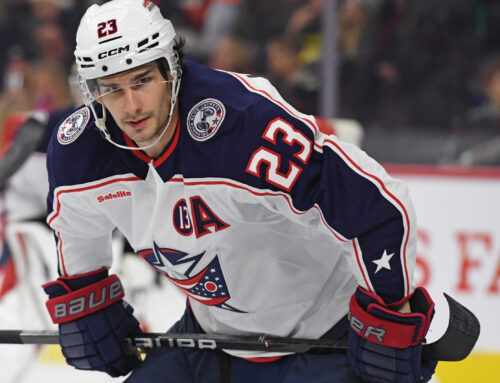
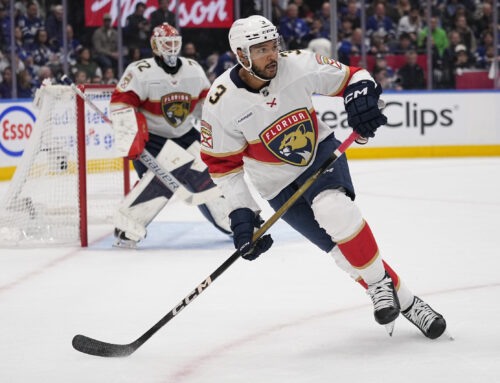
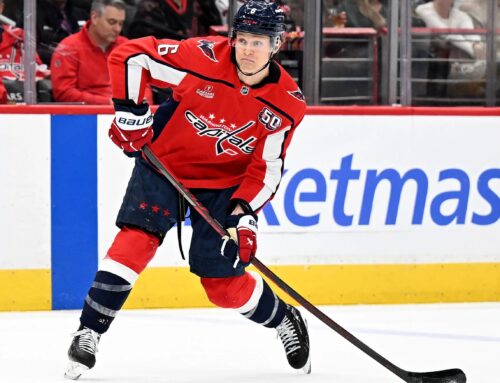
 TOR
TOR EDM
EDM ANA
ANA PIT
PIT BUF
BUF S.J
S.J MIN
MIN DET
DET CBJ
CBJ UTA
UTA NYI
NYI